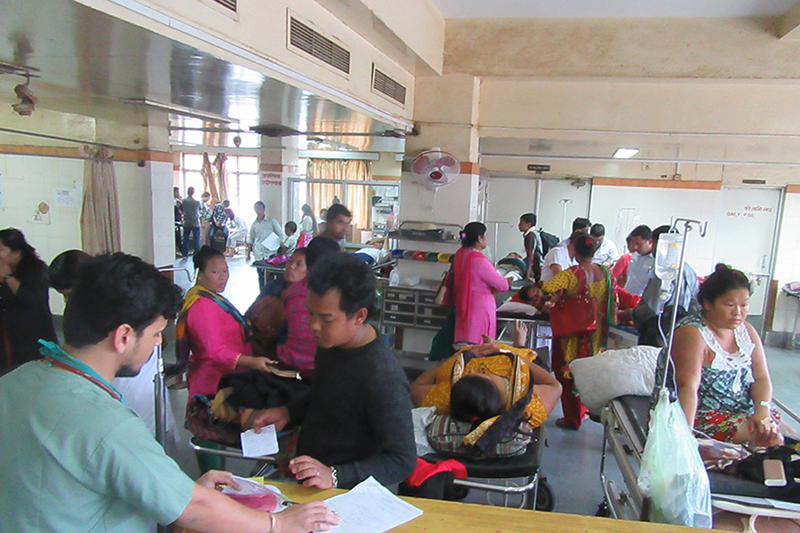11 more districts in grip of dengue
Kathmandu, September 20
Contrary to what Minister of Health and Population Upendra Yadav told the House of Representatives two days ago, the number of dengue cases has gone up unabated across the country, with even high-altitude districts, Taplejung and Rasuwa, reporting cases of the mosquito-borne disease for the first time this year.
On Wednesday, Yadav told the HoR that there was no need to declare health emergency, as the number of dengue patients was on a decline.
However, the disease has spread even to those districts where it was unheard of before. Taplejung, where average temperature hovers around 16 to 24 degrees Celsius throughout summer, has reported two dengue cases so far, according to the Epidemiology and Disease Control Division of the Department of Health Services. Rasuwa, which has similar climatic conditions as Taplejung, has reported one dengue case so far.
Along with these two districts, dengue has spread to nine other districts — Tehrathum, Okhaldhunga, Siraha, Kalikot, Surkhet, Salyan, Baitadi, Bajhang and Dadeldhura — for the first time this year.
Till September 10 the number of dengue-hit districts was 56. But now the disease has spread to 67 districts.
The vector-borne infection has reached high-altitude areas this year, thanks to climate change. “Rise in temperature and movement of people from dengue-hit districts to the hilly and high-altitude areas are some of the reasons for the spread of dengue in high-altitude areas,” said EDCD Director Bibek Kumar Lal.
Lately, mosquitoes that cause dengue have been detected in upper-river valleys, as temperature is rising in these areas, according to Lal. “When an infected but asymptomatic person gets bitten by mosquitoes in these areas, the mosquitoes get infected. This is how the disease is transmitted to others,” said Lal.
As many as 7,370 dengue cases had been reported across the country till Wednesday, up from 5,095 on September 10, show EDCD data.
Some of the districts where dengue cases have increased sharply are Kathmandu, Kaski and Chitwan.
Kaski had reported 1,677 dengue cases till Wednesday, followed by Kathmandu (1,331) and Chitwan (1,237). The number of dengue cases stood at 791 in Kaski, 1,170 in Kathmandu and 1,128 in Chitwan as of September 10.
“Dengue is rapidly spreading in urban areas because of higher population density. Urban areas also offer more breeding spaces for mosquitoes — refrigerators, air coolers, disposable cups and plates, fountains, flower pots and vases, to name a few,” said Lal. He added, “People residing in urban areas also collect rain water and do not cover vessels, which provides a fertile ground for mosquitoes to breed. This is another reason for rapid spread of dengue in urban centres.”






